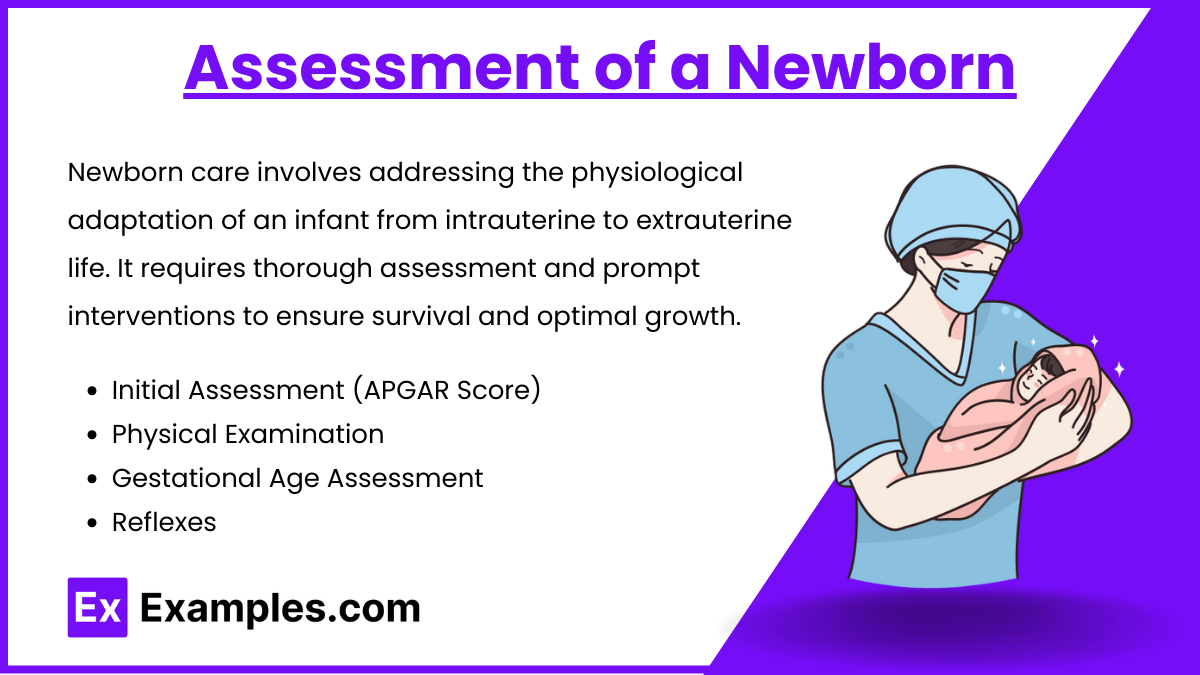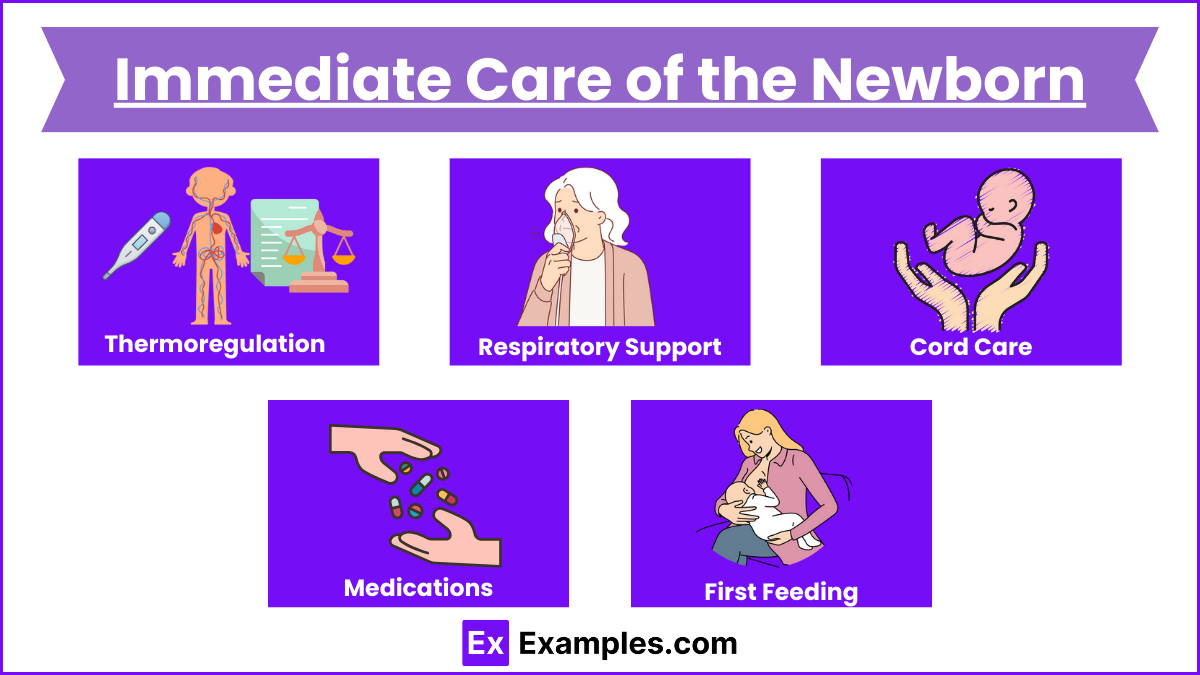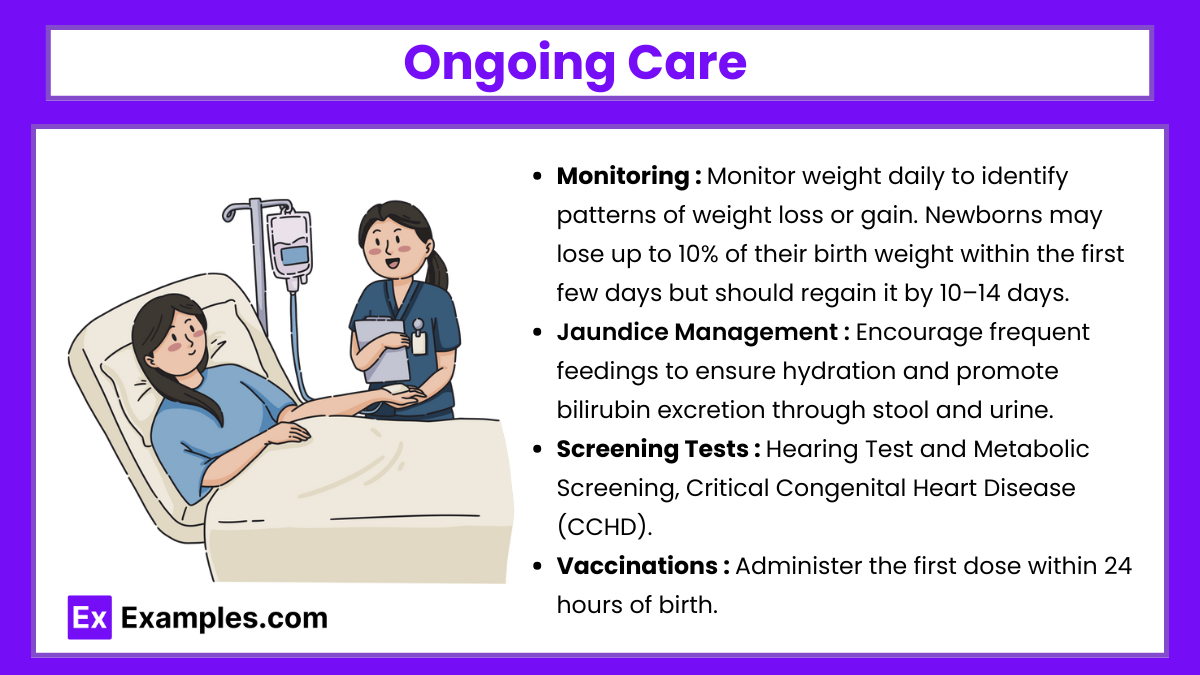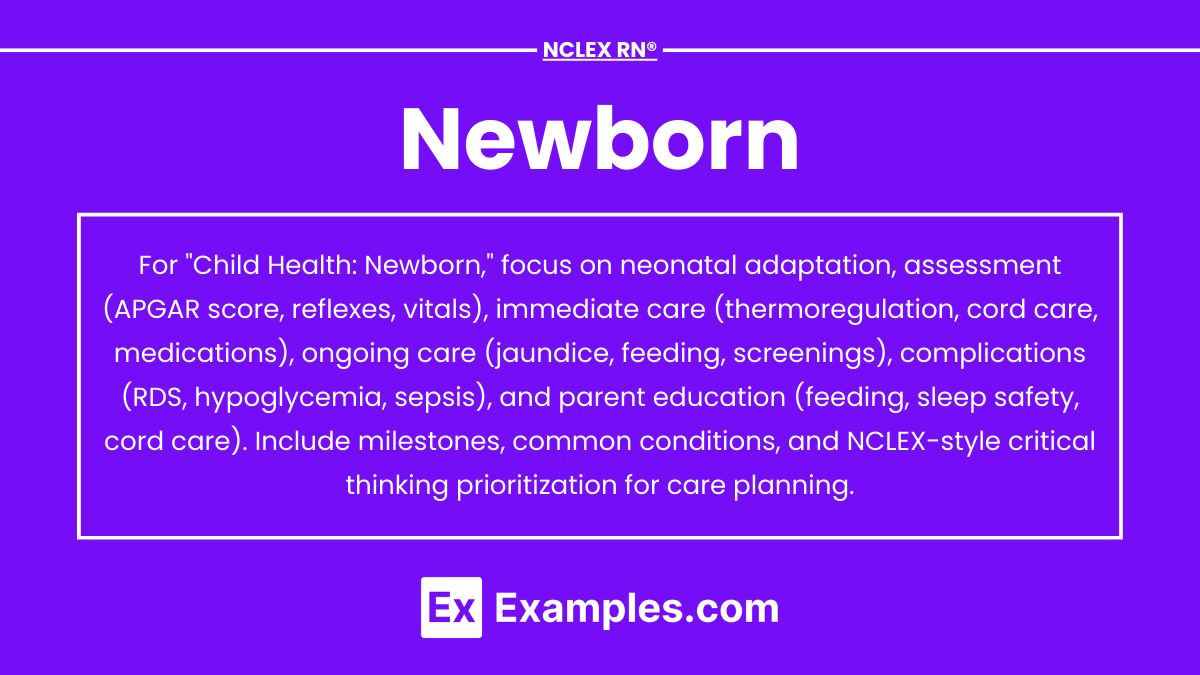The "Child Health: Newborn" topic for the NCLEX RN® focuses on the critical care and assessment of newborns during their transition from intrauterine to extrauterine life. This includes understanding physiological adaptations, performing comprehensive newborn assessments, and providing immediate and ongoing care. Key areas such as thermoregulation, respiratory support, feeding, and the prevention of complications like jaundice and sepsis are emphasized. Mastery of this content ensures nurses can implement evidence-based interventions, prioritize newborn safety, and effectively educate parents for optimal health outcomes.
Learning Objectives
In preparing for "Child Health: Newborn" for the NCLEX RN® exam, you should learn to assess the newborn's physiological adaptation to extrauterine life, including respiratory, thermoregulatory, and metabolic functions. Understand key assessments like APGAR scoring, vital signs monitoring, and reflex evaluations. Evaluate interventions such as thermoregulation techniques, phototherapy for hyperbilirubinemia, and feeding initiation. Explore the importance of parent education in newborn care, including safe sleep practices, feeding methods, and umbilical cord care. Apply this knowledge to prioritize care, recognize complications like respiratory distress and hypoglycemia, and interpret scenarios and outcomes in NCLEX practice questions.
Assessment of a Newborn

Newborn care involves addressing the physiological adaptation of an infant from intrauterine to extrauterine life. It requires thorough assessment and prompt interventions to ensure survival and optimal growth. Key focus areas include respiratory adaptation, thermoregulation, feeding, and prevention of infections.
Initial Assessment (APGAR Score)
Performed at 1 and 5 minutes post-birth.
Parameters:
Appearance (skin color)
Pulse (heart rate)
Grimace (response to stimulation)
Activity (muscle tone)
Respiration (breathing effort)
Scores:
7-10: Normal
4-6: Moderate difficulty
0-3: Severe distress
Physical Examination
Vital Signs:
Temperature: 36.5–37.5°C (97.7–99.5°F)
Heart Rate: 120–160 bpm
Respiratory Rate: 30–60 breaths/min
Weight: Average is 2.5–4 kg (5.5–8.8 lbs).
Head Circumference: 32–36.8 cm (12.6–14.5 in).
Gestational Age Assessment (Ballard Score)
Evaluates physical and neuromuscular maturity.
Used to identify small-for-gestational-age (SGA) or large-for-gestational-age (LGA) infants.
Reflexes
Rooting Reflex: Infant turns head toward stimulus on the cheek.
Moro Reflex: Startle response with arms and legs extending outward.
Grasp Reflex: Infant grasps an object placed in the palm.
Babinski Reflex: Toes fan out when the sole of the foot is stroked.
Immediate Care of the Newborn

Thermoregulation
Newborns are particularly vulnerable to heat loss, which can lead to cold stress, hypoglycemia, and metabolic acidosis. Prevent heat loss through conduction, convection, evaporation, and radiation.
Interventions:
Dry the newborn immediately.
Place under a radiant warmer or use skin-to-skin contact.
Respiratory Support
The transition from intrauterine to extrauterine life requires effective lung expansion and oxygenation. Ensure clear airway by suctioning mouth and nose.
Stimulate crying to promote lung expansion.
Cord Care
Proper cord care is essential to prevent infection (omphalitis) and ensure healing. Clamp and cut the umbilical cord under sterile conditions.
Observe for bleeding or infection.
Administration of Medications
Newborn medications are critical for preventing complications and infections.
Vitamin K: Prevents hemorrhagic disease.
Erythromycin ointment: Prevents ophthalmia neonatorum caused by gonorrhea or chlamydia.
First Feeding
Feeding within the first hour of life supports bonding, stabilizes glucose levels, and stimulates the gut.
Initiate breastfeeding within the first hour of life to promote bonding and stimulate milk production.
Ongoing Care

Monitoring
Monitor weight daily to identify patterns of weight loss or gain. Newborns may lose up to 10% of their birth weight within the first few days but should regain it by 10–14 days.
Watch for signs of dehydration, such as sunken fontanelles, dry mucous membranes, and decreased urine output (fewer than 6 wet diapers per day by day 5).
Observe for signs of hypoglycemia: jitteriness, poor feeding, lethargy.
Regularly assess vital signs and weight.
Jaundice Management
Assess bilirubin levels.
Encourage frequent feedings to ensure hydration and promote bilirubin excretion through stool and urine.
Use phototherapy for severe cases. Monitor stool color and frequency as bilirubin excretion increases.
Screening Tests
Hearing Test : Conducted within the first 24–48 hours of life. Tests like otoacoustic emissions (OAE) or auditory brainstem response (ABR) identify hearing deficits.
Metabolic Screening: Includes tests for conditions like galactosemia, sickle cell anemia, cystic fibrosis, and congenital adrenal hyperplasia (CAH).
Critical Congenital Heart Disease (CCHD): Performed using pulse oximetry on the right hand and one foot.
Vaccinations
Administer the first dose within 24 hours of birth. Obtain parental consent before administration.
Examples
Example 1: Thermoregulation in a Newborn
A nurse is caring for a newborn immediately after delivery. The infant's temperature is 36.0°C (96.8°F), and the nurse notices the baby is shivering. Recognizing that newborns are prone to heat loss due to their large surface area-to-body weight ratio, the nurse prioritizes interventions to prevent further hypothermia. The baby is dried thoroughly, placed under a radiant warmer, and wrapped in warm blankets. Skin-to-skin contact with the mother is initiated to stabilize the infant's temperature. The nurse educates the parents on the importance of maintaining a warm environment and frequent temperature checks.
Example 2: Hypoglycemia in an Infant of a Diabetic Mother
A newborn born to a mother with gestational diabetes is being assessed two hours after birth. The infant is jittery, has poor feeding, and a blood glucose level of 35 mg/dL. The nurse immediately identifies hypoglycemia as a critical issue. To correct the condition, the nurse administers early feedings with breast milk or formula and closely monitors blood glucose levels every 30 minutes to 1 hour. If glucose levels remain low, IV dextrose is initiated as per protocol. The nurse also educates the parents about the signs of hypoglycemia and the importance of frequent feedings.
Example 3: Management of Jaundice
A term newborn is brought to the clinic at three days old with yellow discoloration of the skin and sclera. The nurse assesses the baby's bilirubin levels and identifies mild physiological jaundice. The parents are encouraged to increase breastfeeding frequency to promote bilirubin excretion. The nurse explains the importance of hydration and stooling in reducing bilirubin levels. The baby is scheduled for follow-up bilirubin testing, and the parents are educated on when to seek urgent care, such as if the baby becomes lethargic or develops worsening jaundice.
Example 4: Respiratory Distress Syndrome (RDS) in a Preterm Infant
A preterm infant born at 32 weeks gestation is admitted to the neonatal intensive care unit (NICU) with signs of respiratory distress: nasal flaring, grunting, and intercostal retractions. The nurse immediately administers supplemental oxygen via CPAP to maintain oxygen saturation and prepares to assist with surfactant administration to improve lung compliance. Continuous monitoring of respiratory and cardiac status is initiated. Parents are informed about the condition, treatments, and prognosis, with emphasis on the importance of follow-up developmental assessments.
Example 5: Critical Congenital Heart Disease (CCHD) Screening
A nurse is performing routine newborn screenings before discharge. During the Critical Congenital Heart Disease (CCHD) screen using pulse oximetry, the infant’s oxygen saturation is 90% in the right hand and 86% in the left foot. Recognizing this as abnormal, the nurse immediately informs the healthcare provider. The baby is transferred to a higher level of care for diagnostic evaluation, such as an echocardiogram. The parents are provided with information about potential cardiac conditions, the need for specialized care, and the importance of regular pediatric cardiology follow-up.
Practice Questions
Question 1
A nurse is performing an initial assessment of a newborn. Which APGAR score component evaluates the newborn’s reflex irritability?
A. Skin color
B. Muscle tone
C. Response to stimulation
D. Respiratory effort
Answer: C. Response to stimulation
Explanation:
The APGAR score assesses five areas of the newborn’s adaptation at 1 and 5 minutes after birth: Appearance, Pulse, Grimace, Activity, and Respiration.
Response to stimulation evaluates the newborn’s reflex irritability and is reflected in the "Grimace" component.
Scoring:
0: No response
1: Grimace or weak cry
2: Vigorous cry or withdrawal
Other components evaluate:
A. Skin color: Appearance
B. Muscle tone: Activity
D. Respiratory effort: Respiration
Question 2
Which intervention is most appropriate to prevent heat loss in a newborn immediately after delivery?
A. Place the newborn on a pre-warmed scale.
B. Delay drying the newborn to allow for skin-to-skin bonding.
C. Place the newborn under a radiant warmer.
D. Bathe the newborn immediately to remove blood and vernix.
Answer: C. Place the newborn under a radiant warmer
Explanation:
Newborns are highly susceptible to heat loss due to their immature thermoregulatory systems. Four mechanisms contribute to heat loss:
Conduction: Loss of heat to a cooler surface in direct contact.
Convection: Loss of heat to cooler air currents.
Evaporation: Heat loss due to moisture on the skin.
Radiation: Loss of heat to cooler surfaces near the newborn.
Placing the newborn under a radiant warmer prevents heat loss through all these mechanisms and helps maintain normothermia.
Other options:
A. Pre-warmed scale prevents conduction but is insufficient alone.
B. Delaying drying increases evaporation and heat loss.
D. Immediate bathing also leads to significant heat loss.
Question 3
A nurse observes jaundice in a newborn on the second day of life. What is the most appropriate nursing action?
A. Encourage early and frequent breastfeeding.
B. Perform a heel stick to check blood glucose.
C. Administer phototherapy immediately.
D. Prepare the newborn for an exchange transfusion.
Answer: A. Encourage early and frequent breastfeeding
Explanation:
Physiologic jaundice typically appears 24–48 hours after birth and peaks around the third to fourth day due to immature liver function and increased bilirubin from red blood cell breakdown.
Early and frequent breastfeeding promotes stool production, aiding in the excretion of bilirubin.
Other options:
B. A heel stick for glucose is unrelated to jaundice unless there are symptoms of hypoglycemia.
C. Phototherapy is reserved for significant hyperbilirubinemia based on bilirubin levels, gestational age, and risk factors.
D. Exchange transfusion is for severe or refractory cases, which is not indicated for mild physiologic jaundice.


